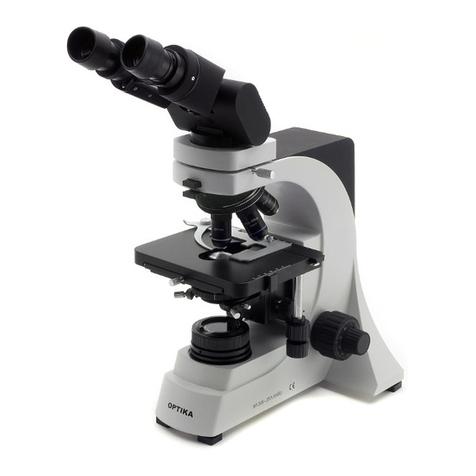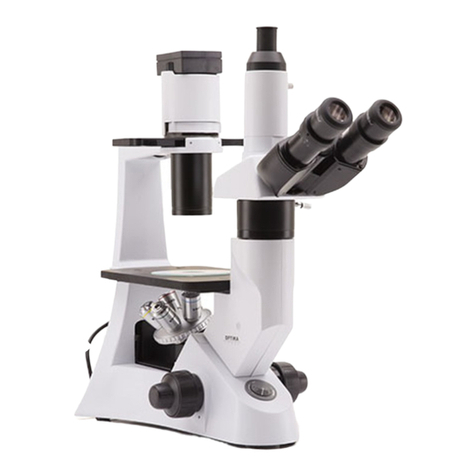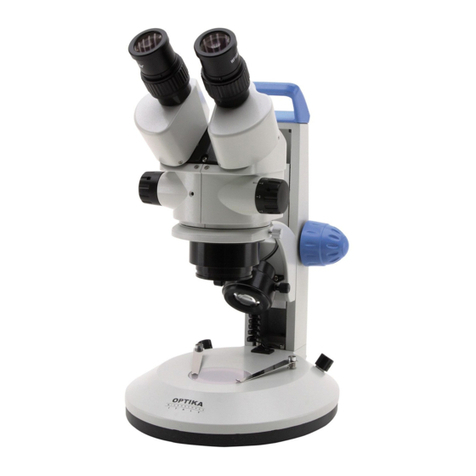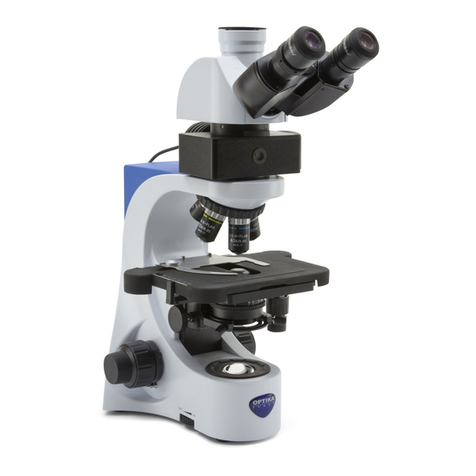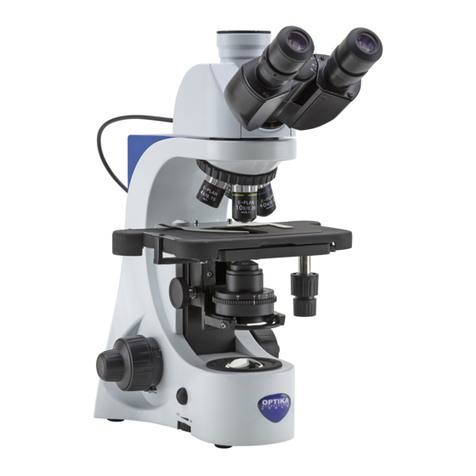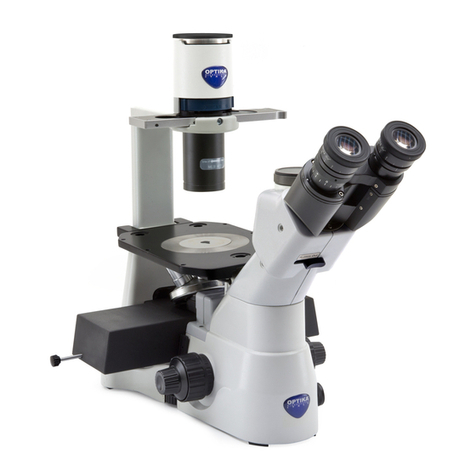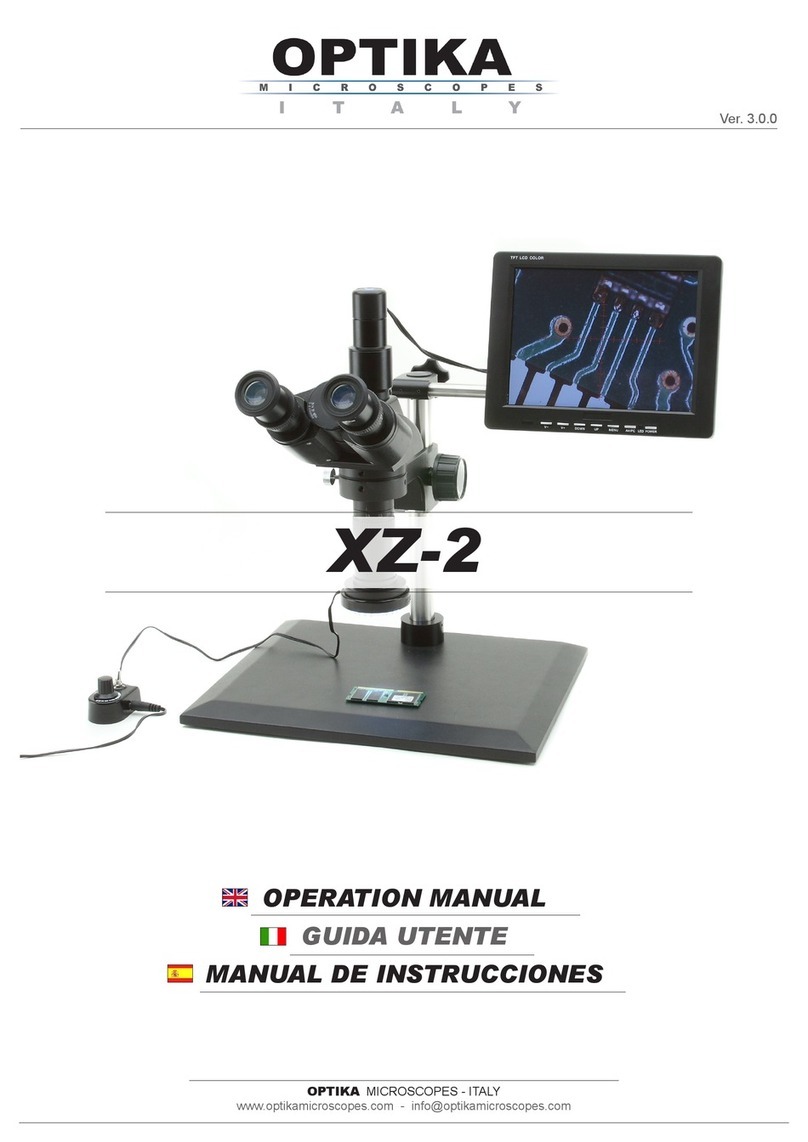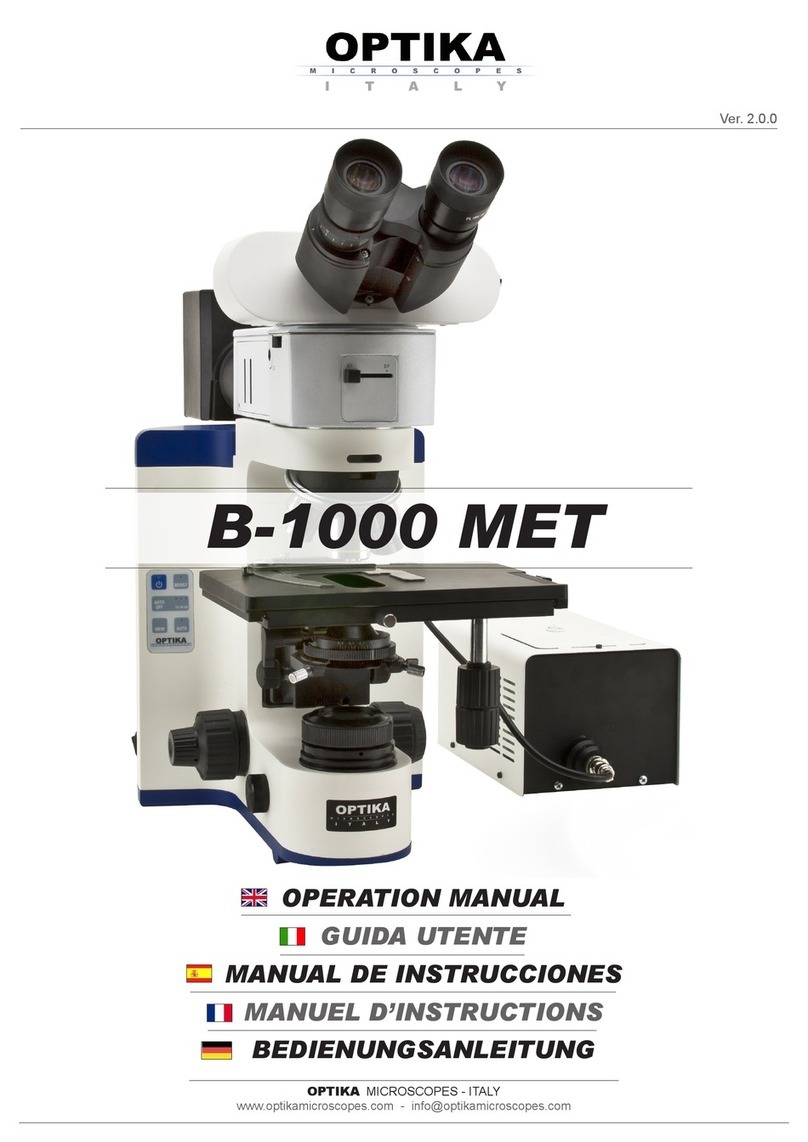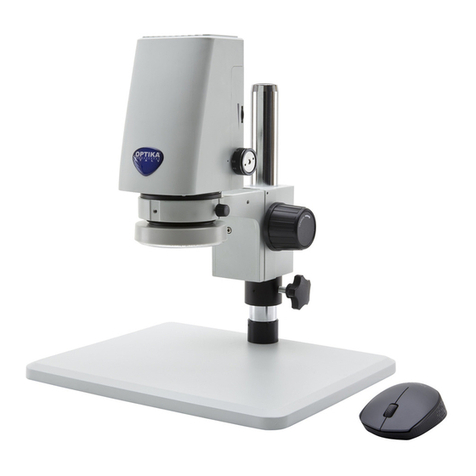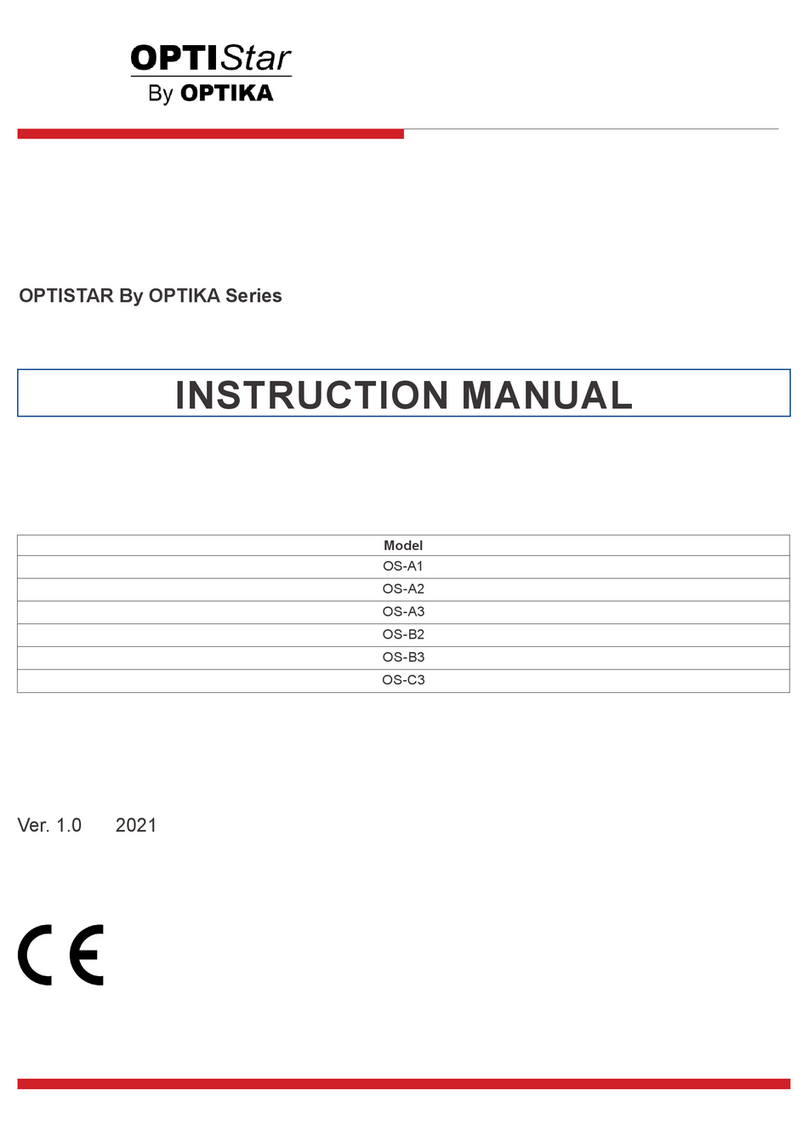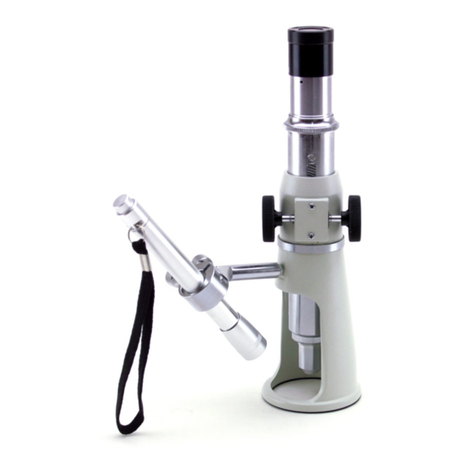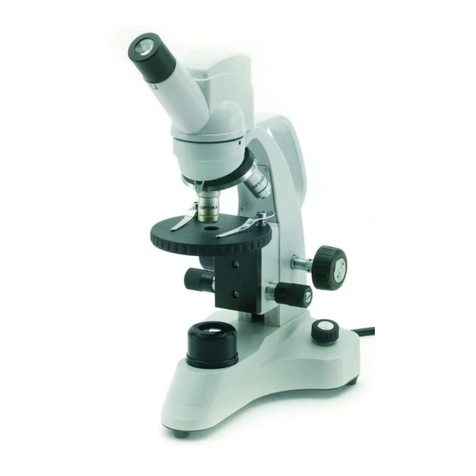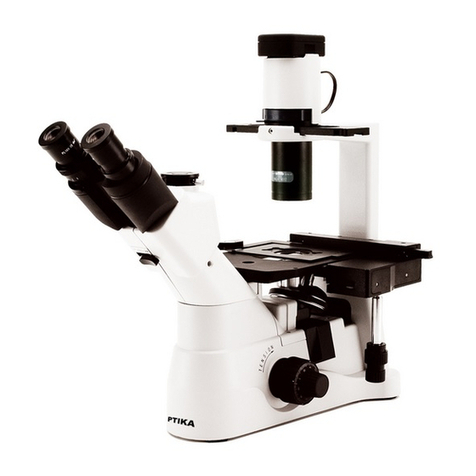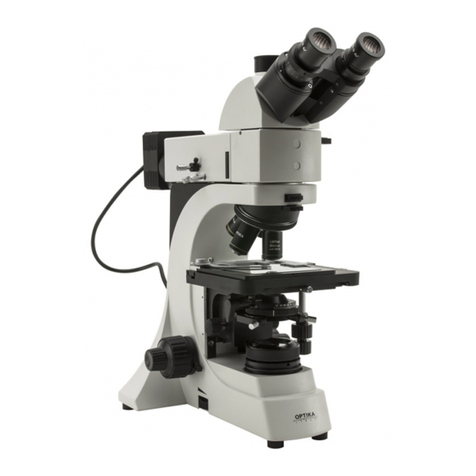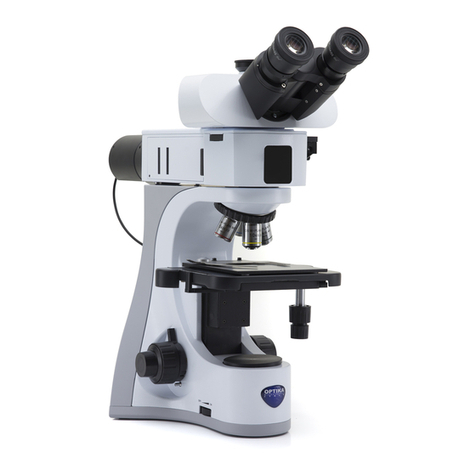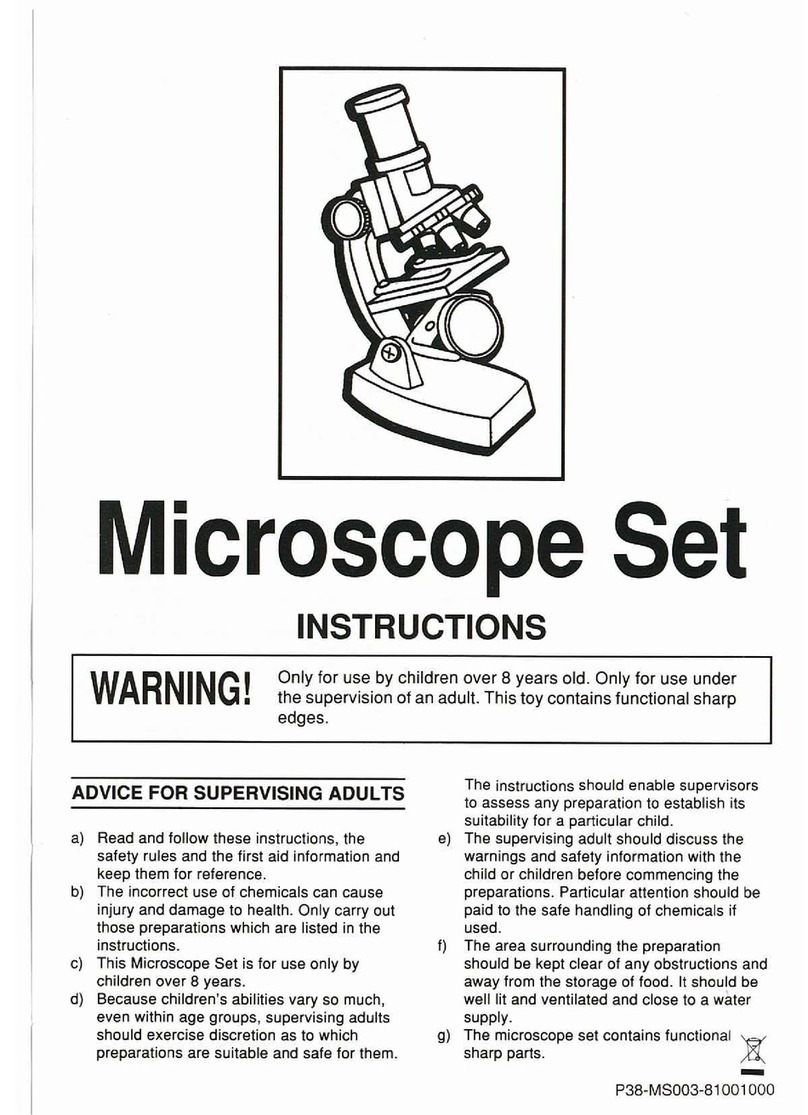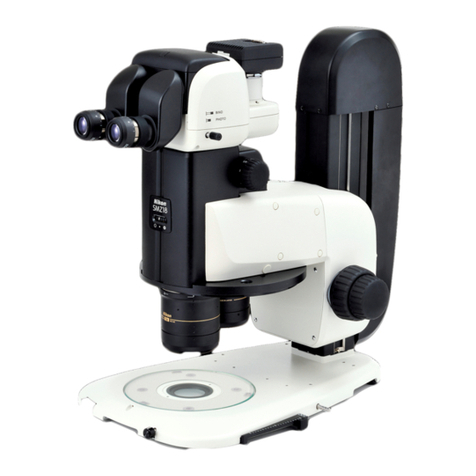Page 8
4.1 Adjust the observation head
Loosen the lock-screw, turn the observation head to a comfortable position for observation, and then
lock the lock-screw.
4.2 Place the specimen on the stage
Lock the specimen slide on the mechanical stage using the slide clamp. Ensure that the specimen is
centred over the stage opening by adjusting the X-Y translation knobs of the stage.
4.3 Lamp settings
The microscope is tted with a 3,5W high-efciency white led source. Insert the plug of the power
supply into the power socket and turn on the ON/OFF switch on the side of the main body. Turn the
brightness adjustment knob to a brightness suitable for observation.
4.4 Adjust interpupillary distance
Hold the right and left parts of the observation head with both hands and adjust the interpupillary
distance by turning the two parts until one circle of light can be seen. After nishing the interpupillary
adjustment, turn the dioptric adjustment ring on the left eyetube to the “0” position on the graduated
line.
4.5 Focus and diopter adjustment
Loosen the focus-stop knob, rotate the coarse focusing knob to bring the slide into focus with an
objective with a low magnication. Adjust the ne focusing knob to get the image sharp and clear whi-
le observing with your right eye, then turn the left dioptric adjustment ring to a sharp and clear image
also with the other eye.
Turn the tension-adjust-knob to get a suitable tension for the focus system. When the image is in fo-
cus, turn the nosepiece to choose the objective you need.
4.6 Condenser adjustment
Turn the condenser adjustment knob to move the condenser up or down for a clear and uniform sam-
ple illumination. The two condenser centring screws can be used to centre the condenser.
4.7 Set the numerical aperture
Adjust the aperture of the iris diaphragm to set the numerical aperture of the illuminator, thus control-
ling image contrast and resolution.
4.8 Field diaphragm
Adjust the eld diaphragm to align the system and to control stray light.
4.9 Additional lters
The colored lter (green) can be inserted directly above the eld diaphragm. The use of the green lter
is recommended for phase contrast observations.
4.10 Using the polarizer (optional)
The polarizing set consists of two lters: the analyzer and the polarizer. The analyzer is placed in the
lter slot under the head, while the polarizer directly above the eld diaphragm.
4.0 USING THE MICROSCOPE

